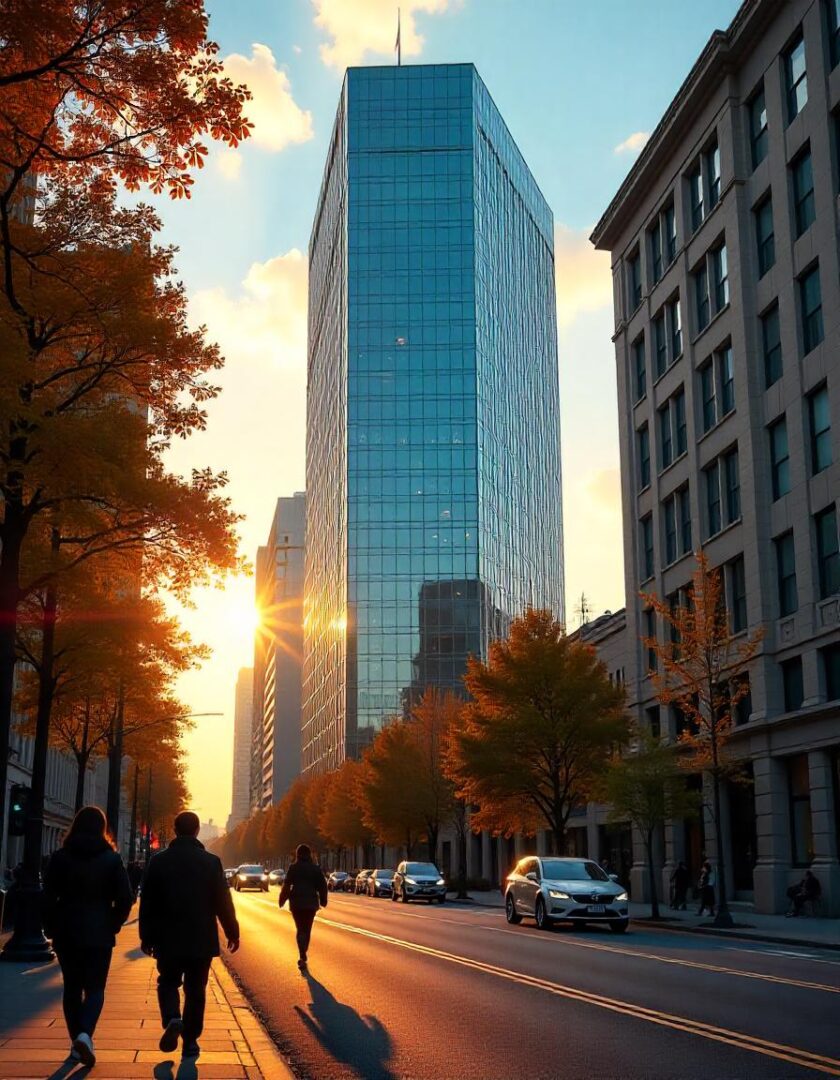As we move closer to 2025, architecture is transforming. Gone are the days of static designs that merely serve functionality. Today, buildings must meet sustainability goals, embrace technological advancements, and create spaces that enhance both communities and the planet. These five trends highlight the future direction of architecture, blending creativity with purpose.
Sustainability Beyond Net Zero
Sustainability in architecture is evolving far beyond net-zero goals. The focus now is on regenerative designs that actively restore and enhance the environment.
Regenerative Architecture
Regenerative architecture goes beyond reducing environmental damage—it actively contributes to ecosystem restoration. Consider projects like those integrating living walls, rooftop gardens, or systems that harvest rainwater for reuse. These designs not only beautify urban areas but also tackle challenges such as heat islands and water scarcity.
One notable resource exploring these innovations is Scenario Architecture which anticipates rising adoption of regenerative practices in 2025.

Photo by Scott Webb.
Advances in Sustainable Materials
In 2025, we’ll see a surge in bio-friendly building materials, from recyclable terracotta to bamboo composites. Locally sourced and renewable resources are replacing traditionally manufactured materials, reducing the carbon footprint of construction. For a deeper dive into eco-material innovations, check out Wallpaper’s guide.
Optimized Energy Systems
Energy-efficient systems are becoming smarter and more optimized. Solar panels, passive natural ventilation, and daylighting techniques are now standard features in modern buildings. Systems like these not only reduce operational costs but also align with global carbon reduction targets.
Technology-Driven Designs
Technology is transforming how buildings are conceptualized, built, and interacted with. The infusion of cutting-edge tools is enabling architects to think bigger and smarter.
Artificial Intelligence in Architecture
AI has stepped into the architectural world, bringing tools such as generative design and automated construction. These systems enable rapid prototyping of complex structures, significantly cutting down design timelines. Read more about this evolution in Autodesk’s insights.
Virtual and Augmented Reality
Virtual and augmented reality tools let architects and clients walk through digital 3D models before breaking ground. The level of detail and immersion offered by these technologies enhances decision-making while saving time on revisions.
Modular and 3D-Printed Structures
Prefabricated modular designs and 3D printing promise faster, cost-effective construction. These methods are particularly useful for housing projects, especially in disaster-stricken or low-income areas. Learn more about their growing impact on modern design.
Biophilic and Human-Centric Design
In 2025, architecture will reconnect people with nature and prioritize human well-being.
Biophilic Interiors
Incorporating indoor plants, water features, and ample natural light will dominate interior design trends. These elements reduce stress and make indoor spaces more relaxing and vibrant. If you’re curious about real-world examples, explore UCEM’s biophilic architecture guide.
Mixed-Use Lifestyle Districts
Urban spaces are being reimagined as self-contained communities—think areas combining housing, offices, shopping, and recreational activities. These walkable hubs promote social interaction while cutting down on car dependency.
Designing for Health and Wellness
From layouts that encourage movement to calming spaces prioritizing mental health, architects are addressing wellness head-on. Providing places to de-stress has never been more important in our fast-changing cities.
Adaptive Reuse in Architecture
Adaptive reuse offers a sustainable way to revive older structures rather than constructing from scratch.
Transforming Old Spaces
Warehouses turning into sleek office spaces or factories converted into apartments are excellent examples of adaptive reuse. This trend helps preserve historical aesthetics while making buildings more functional. The Architectural Digest dives deeper into upcoming projects adopting this approach for 2025.
Economic and Environmental Benefits
Adaptive reuse often saves money, reduces urban sprawl, and combats waste by recycling existing materials. It promotes smart city planning by combining heritage preservation with sustainability. Explore this in Gensler’s adaptive strategies.
Resilience and Adaptability in Design
Architects are preparing for unpredictable future challenges by creating buildings that are both climate-resistant and flexible.
Climate-Responsive Structures
Structures are now capable of withstanding extreme conditions like floods, wildfires, or heavy storms. Architects are using innovative materials and designs to ensure durability in the face of climate change.
Flexible Spaces for Evolving Needs
Multi-purpose buildings that adapt to different uses—such as converting offices into apartments—are becoming increasingly necessary. This flexibility caters to shifting lifestyles and work patterns.
Conclusion
These architectural trends hint at a future where buildings seamlessly merge sustainability, technology, and community needs. In 2025, regenerative materials, immersive technologies, and adaptive methods will redefine how we live and interact with our surroundings. Imagine the possibilities: cities filled with smarter, greener, and more inspiring spaces. Together, they will reshape not only the skylines but our experiences within them. Find out more!
